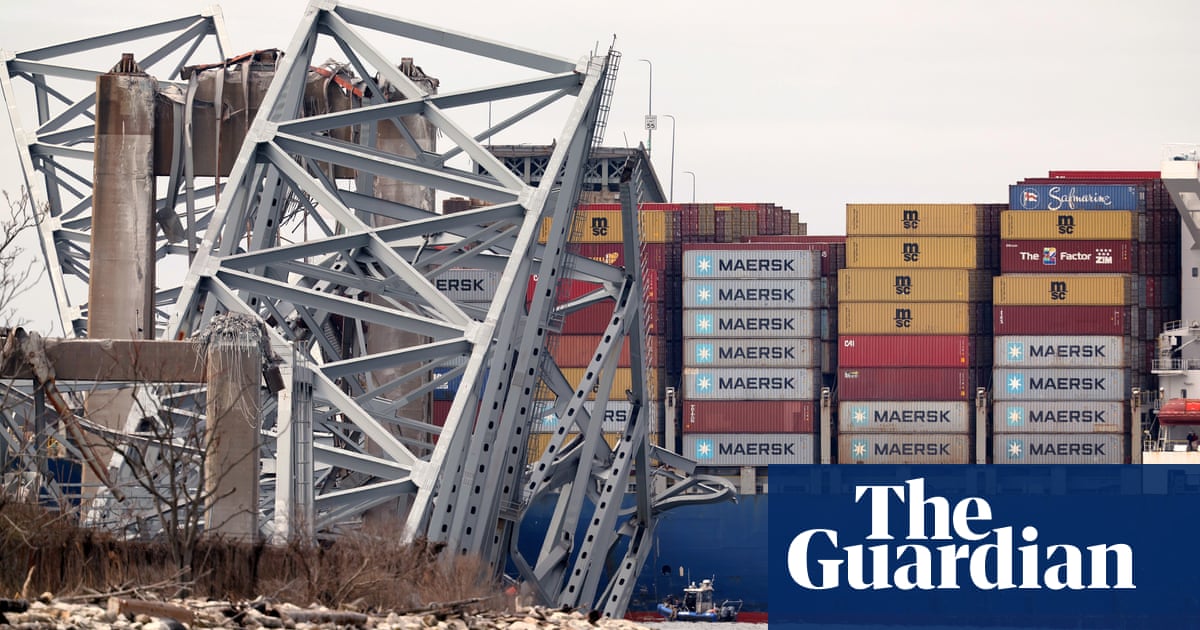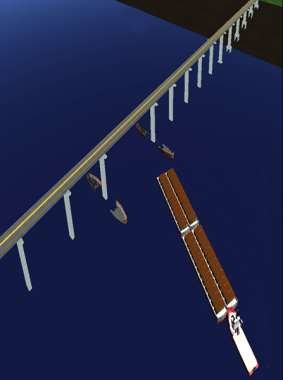A portion of the Francis Scott Key Bridge in Baltimore has collapsed after a large boat collided with it early on Tuesday morning, sending multiple vehicles into the water.
At about 1.30am, a vessel crashed into the bridge, catching fire before sinking and causing multiple vehicles to fall into the water below, according to a video posted on X.
“All lanes closed both directions for incident on I-695 Key Bridge. Traffic is being detoured,” the Maryland Transportation Authority posted on X.
Matthew West, a petty officer first class for the coastguard in Baltimore, told the New York Times that the coastguard received a report of an impact at 1.27am ET. West said the Dali, a 948ft (29 metres) Singapore-flagged cargo ship, had hit the bridge, which is part of Interstate 695.



The investigation report is going to be interesting. While bridges can only take so much punishment, they are usually designed to survive some collisions with their pylons. I wonder what the state of the bridge was, prior to the collapse. If it’s anything like the rest of the infrastructure in the US, it was probably not good. Though, this may also be a case that the designers in the 70’s planned for a collision with a cargo vessel of the times, which were tiny bath tub boats compared to the super container ships we have now. The Dali was built in 2015 she is a 300m ship capable of carrying 116851 tons. That’s a lot of mass for the pylon and it’s barriers to stop.
I’m pretty sure no bridge is designed to survive a collision with a large cargo ship, even a brand new one. It would balloon the cost so much nobody would be willing to pay it.
New bridges are built with protections such as pylons to prevent ships from even getting close to bumping into the bridge after the sunshine skyway bridge collapse of 1980.
In this case I’m not sure it would have mattered. This wasn’t a bump or a glancing blow. There’s not much which will deflect or absorb that much energy head on.
I disagree, the geometry of protection dolphins use would deflect the ship enough to change its trajectory towards the walls of the channel bed where the ship would run aground before striking the bridge even from a head on collision.
What is a geometry protection dolphin?
They are concrete or wooden structures that are piled deep into the ground like fondation foundation pylons on skyscrapers. The geometry part I was just referring to how they are angled in such a way it ricochets the ship away from the structure it’s protecting or towards the channel.
So why on earth didn’t the bridge have these?
A. It did, just only a few and the investigation will probably reveal not enough based on giant ships these days.
B. It was built before the Sunshine bridge collapse in 1980 so before the standards were updated.